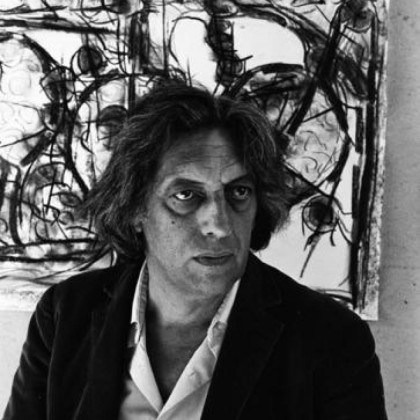Artwork
-
Inquire for pricing
Biography
Creating the mosaic-like gestural canvases by employing the tachiste style through the application of oil paint in thick, demonstrative strokes with palette knife, the Canadian painter and sculptor, Jean-Paul Riopelle, was widely regarded as Canada's most important modern artist, whose Abstract Expressionist style was often compared to that of American artist Jackson Pollock.
One of the first Canadian artists to gain major international recognition, Riopelle was born on October 7, 1923, in Montreal, Quebec. About the age of 13, he began taking drawing lessons with Henry Bisson and took the natural Canadian landscape as his subject. From 1943 to 1945, he studied painting at the École des Beaux-Arts and École du Meuble Montreal, where he met teacher Paul Émile Bourduas.
Joining the “Les Automatistes”, an offshoot of the Surrealist movement, founded by Bourduas, Riopelle spearheaded the controversial “Refus global”, an antireligious and anti-established manifesto that rejected academic training in favor of nonfigurative painting propelled by the creative subconscious. By the time the “Refus global” was published in 1948, Riopelle had been settled in Paris for a year, organizing an exhibition of Canadian avant-garde artists at the Parisian Galerie du Luxembourg in summer 1947.
In Paris, Riopelle associated with Surrealists such as André Breton and Marcel Duchamp, and first gained international recognition. His early lyrical, abstract paintings evolved into a denser, more powerful impasto style. In the pursuit of vitality and diversity, he also worked with gouache, watercolor, and ink and experimented with bronze sculpture. When pop art and nouveau réalisme became popular in the 1960s, Riopelle introduced representational element back into his work. These later paintings have been described as “abstract landscapism”.
Riopelle represented Canada at the Venice Biennale in 1954 and achieved international acclaim with the huge triptych “Pavane”. His work was again chosen for the Venice Biennale in 1962 and was awarded the UNESCO prize that year. In 1963, the National Gallery of Canada, Ottawa, exhibited 82 of his paintings and sculptures; at age 40 he became the youngest artist to be given a retrospective exhibition at the gallery.
Spending most of his time in Paris, Riopelle returned to Canada in early 1990s, settling permanently in Quebec. He remained a prolific artist in the last decade of his life, and his work became more representational, with the suggestion of landscape marked in many of his paintings. In 2000, he produced his last major work, “L’Hommage à Rosa Luxemburg”, a narrative fresco of 30 paintings that were more than 40 meters (130 feet) long.
At the age of 78, Riopelle died on March 12, 2002, in Île-aux-Grues, Canada. Today, his works are held in the collections of the National Gallery of Canada, the Tate Gallery in London, the Art Institute of Chicago, and the Peggy Guggenheim Collection in Venice, among others.
